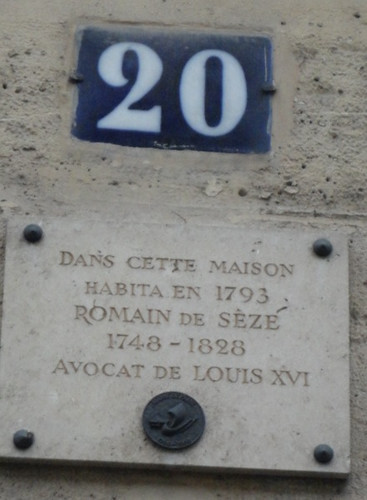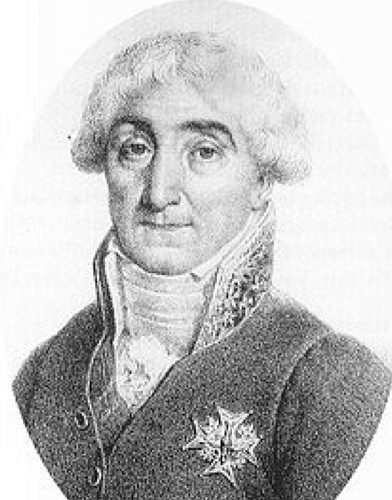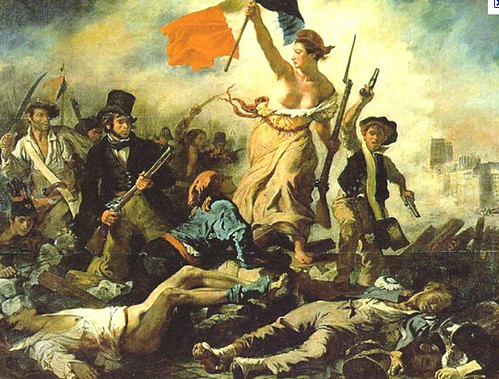Walking the back streets of Paris behind the back streets, that were those streets that had been back streets behind other back streets, I saw this:
For no particular reason this house caught my attention. I don't know about you, but when my attention is caught it tends to get caught. So I stepped a little closer to see the the plaque on the house:
Well that says quite a bit. To translate: “in this house in 1793 lived Roman deSeze 1748-1828 lawyer for Louis XVI.”For those of you who are history buffs, you will know that Louis XVI was the king of France when the big Revolution hit. And things did not go well for him. They took his head off in 1793.
This is the king:
And this is the Lawyer:
The story of the Revolution is one of savage violence where many people died.Are we getting a theme here?Why do we need to keep killing people?That is a question that we need to confront. If we do not decide to stop killing people, then we have a Bad World. But if we decide to stop killing people and stop killing whales and stop killing all the life forms that help us everyday, then we may have a Good World.We have to make some choices, but nobody seems to be making any choices.Do we have a Good World or a Bad World? Do we have a Dead World? Or do we have a World that stays alive together?These are just questions I pose as I step into oblivion.
By the way, this is the device the French developed in the late 1700's to end lives. And painted red, no less. Symbolic? Or Servicable?
One of the men credited with being a big part of the revolution and fighting for people' rights was Georges Danton. He said, for example, “after bread, education is the primary need of a people.”However, just a year after the king, Danton was himself taken to the guillotine at age 34. Before the ever-present crowd, they say he said this to the executioner: “Don't forget to show my head to the people. It's well worth seeing.”Now, I've heard of gallows humor before, but never before of guillotine humor. I suppose it is similar, but perhaps (hem) a little sharper.
This is one of the most famous paintings of the Revolution.






